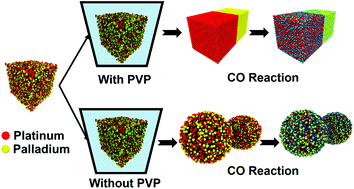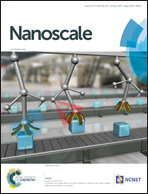Morphology controlled graphene–alloy nanoparticle hybrids with tunable carbon monoxide conversion to carbon dioxide†
Abstract
Selective oxidation of CO to CO2 using metallic or alloy nanoparticles as catalysts can solve two major problems of energy requirements and environmental pollution. Achieving 100% conversion efficiency at a lower temperature is a very important goal. This requires sustained efforts to design and develop novel supported catalysts containing alloy nanoparticles. In this regard, the decoration of nanoalloys with graphene, as a support for the catalyst, can provide a novel structure due to the synergic effect of the nanoalloys and graphene. Here, we demonstrate the effect of nano-PdPt (Palladium–Platinum) alloys having different morphologies on the catalytic efficiency for the selective oxidation of CO. Efforts were made to prepare different morphologies of PdPt alloy nanoparticles with the advantage of tuning the capping agent (PVP – polyvinyl pyrollidone) and decorating them on graphene sheets via the wet-chemical route. The catalytic activity of the G-PdPt hybrids with an urchin-like morphology has been found to be superior (higher % conversion at 135 °C lower) to that with a nanoflower morphology. The above experimental observations are further supported by molecular dynamics (MD) simulations.



 Please wait while we load your content...
Please wait while we load your content...